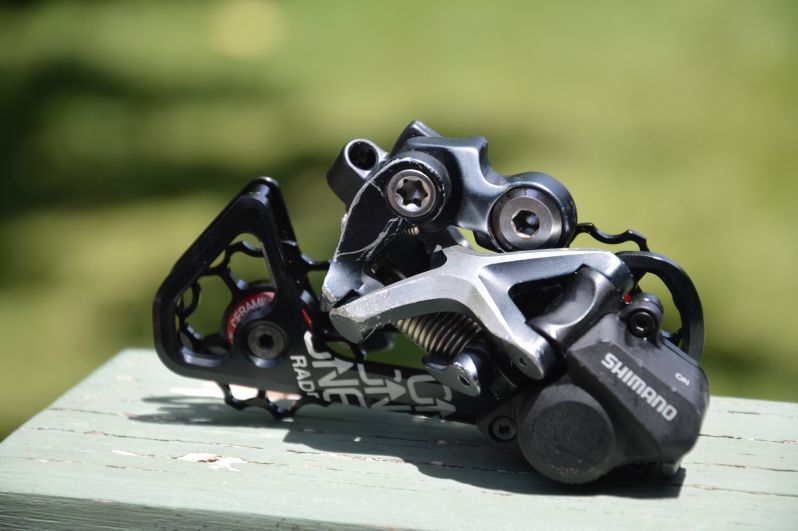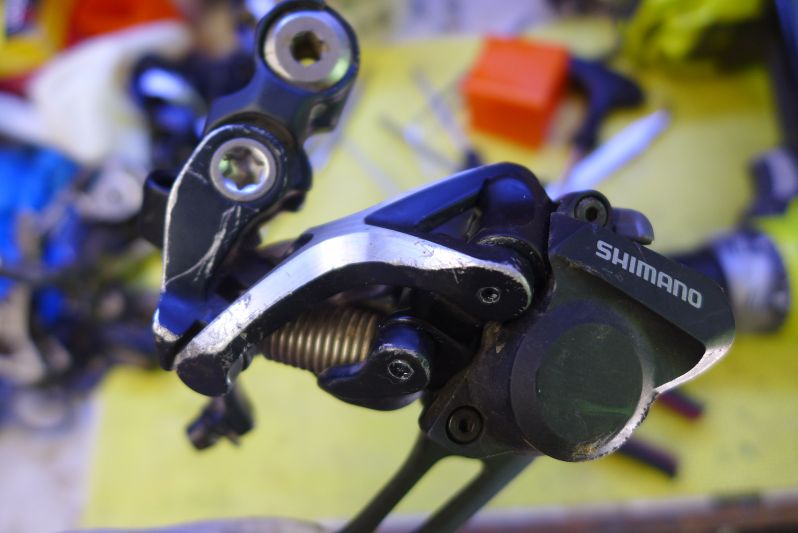There are several ways to get a 9 speed clutch derailleur. The most popular is to use a Shimano 10 speed shadow plus rear derailleur like a Zee, Saint, SLX, XT or XTR in combination with a SRAM 9 speed shifter
.
There is, however, another way. You can use the clutch and cage mechanism from a broken shadow plus rear derailleur on your 9 speed shadow rear derailleur. In my case, I've used my 9 speed XTR derailleur and substituted the lower knuckle for a shadow plus (with clutch) one from an XT rear derailleur. The parallelogram mounting points and pin sizes are same between the 9 and 10 speed shadow rear derailleurs.
OneUp RADr cage
The derailleur cage from the donor XT shadow+ derailleur was trashed and also missing the inner plate, so to fix this I ordered a OneUp Radr cage which comes with both a replacement inner and outer plate.

Total weight with RADr cage and AEST ceramic bearing jockey wheels is 228g.
Note: once I fitted the RADr cage I noticed that it interfered with the rear parallelogram linkage. A small section needs to be ground away to get the top of the cage to clear when in the smallest 11t cog.
Lower knuckle removal and re-assembly process
To swap lower knuckles between derailleurs requires the retaining pins to be pressed out. The pins fit into blind holes, so the process is as follows:
- drill a small hole (around 2mm) in the centre of the bottom of each link (take a look at the picture above, and you can see the holes drilled for this purpose);
- use a suitable size punch to drive the both pins out;
- take care not to lose the small o-rings that seal between the parallelogram links and the lower knuckle.
Note: you don't need to worry about the parallelogram spring, it is attached to the inner parallelogram link and the top knuckle only.
Re-assembly is the reverse process, but the pins have some raised splines on the outside end to secure themselves in the parallelogram - take care to position these in a slightly different location to where they were originally so they have some fresh material to bite into, thereby stopping the pin from coming out.
